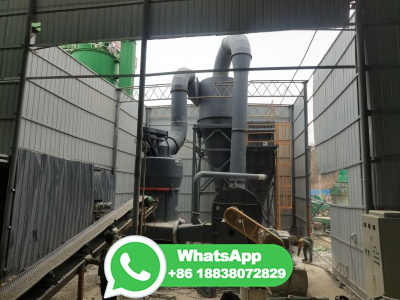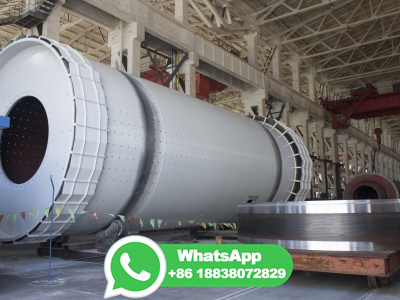
WEBJan 9, 2017 · The Process of Hydraulic Fracturing. Hydraulic fracturing produces fractures in the rock formation that stimulate the flow of natural gas or oil, increasing the volumes that can be recovered. Wells may be drilled vertically hundreds to thousands of feet below the land surface and may include horizontal or directional sections extending ...
WhatsApp: +86 18203695377
WEBMay 29, 2024 · Coal is an abundant natural resource that can be used as a source of energy, as a chemical source from which numerous synthetic compounds (, dyes, oils, waxes, pharmaceuticals, and pesticides) can be derived, and in the production of coke for metallurgical is a major source of energy in the production of electrical .
WhatsApp: +86 18203695377
WEBJul 24, 2019 · They believed that the Earth was in the process of cooling and shrinking, an idea they used to explain the formation of mountains, much like wrinkles on a prune. Wegener, though, pointed out that if this were true, mountains would be stered evenly all over the Earth's surface rather than lined up in narrow bands, usually at the edge of a ...
WhatsApp: +86 18203695377
WEBThe socalled coalifiion or carbonifiion includes the process of diagenesis, and the metamorphic changes of the coal. The diagenesis of coals is often referred to as "biochemical coalifiion", whereas the metamorphism of coals is called "geochemical coalifiion". The coalifiion begins with peat and ends with highly metamorphic ...
WhatsApp: +86 18203695377
WEBDec 13, 2023 · The formation of clastic and organic rocks begins with the weathering, or breaking down, of the exposed rock into small fragments. Through the process of erosion, these fragments are removed from their source and transported by wind, water, ice, or biological activity to a new loion. Once the sediment settles somewhere, and enough .
WhatsApp: +86 18203695377
WEBWhat are the stages of coal formation? There are four stages in the coal formation. They are peat, lignite, bituminous and anthracite. These stages depend upon the conditions to which the plant remains are subjected after they were buried. Greater the pressure and heat, the higher the rank of coal. Higherranking coal is denser and contains ...
WhatsApp: +86 18203695377
WEBJan 5, 2023 · Heat, time, pressure, and coalifiion. Heat: Heating is the primary control on coalifiion and rank increases in coal. On average, heat in the earth rises 1 degree Fahrenheit per 70 to 100 feet of depth. The deeper a coal is buried in a subsiding basin, the higher its rank. Heating during burial can also occur through interaction with ...
WhatsApp: +86 18203695377
WEBThere are four major types (or "ranks") of coal. Rank refers to steps in a slow, natural process called "coalifiion," during which buried plant matter changes into an ever denser, drier, more carbonrich, and harder material. The four ranks are: Anthracite: The highest rank of coal. It is a hard, brittle, and black lustrous coal, often referred to as .
WhatsApp: +86 18203695377
WEBUnder these conditions, these slowly got converted into coal. This process of formation of coal from dead vegetation is called carbonization. Exercises Page Number 62. 4. Fill in the banks. (a) Fossil fuels are _____, _____and _____. ... Explain why fossil fuels are exhaustible natural resources.
WhatsApp: +86 18203695377
WEBAs coal contains mainly carbon, the slow process of conversion of dead vegetation into coal is called carbonisation. Since it was formed from the remains of vegetation, coal is also called a fossil fuel ... and their formation is an extremely slow process, taking millions of years as organic matter undergoes transformation into fuel. So, once ...
WhatsApp: +86 18203695377
WEBJun 7, 2023 · Coal Geology. Coal is a combustible sedimentary rock formed from ancient vegetation which has been consolidated between other rock strata and transformed by the combined effects of microbial action, pressure and heat over a considerable time period. This process is commonly called 'coalifiion'. Coal occurs as layers or seams, ranging .
WhatsApp: +86 18203695377
WEBJun 19, 2023 · The process of coal formation is slow. It takes around 300 million years to form. The process of coal formation is known as coalifiion. The following are the steps for the process of formation of coal: (Peat rightarrow Lignite rightarrow Bituminous rightarrow Anthracite) Peat Formation: This is the first stage of coal formation. It is ...
WhatsApp: +86 18203695377
WEBDiscuss the process of destructive distillation of coal. Explain the process of separating crude oil into its usable components. Enlist the properties and uses of natural gas. Mention its major component. Make a welllabelled diagram to .
WhatsApp: +86 18203695377
WEBMay 6, 2016 · the process of formation of coal is and other plants that grew in swampy areas 300400 million years ago died and their remains got buried in the swampy time,these remains were covered with layers of sediments such as mud and sand. low oxygen conditions,the buried plant material formed a dark brown material called .
WhatsApp: +86 18203695377
WEBDuring gasifiion, most of the nitrogen in the coal is converted into harmless nitrogen gas (N 2). However, small levels of ammonia (NH 3) and hydrogen cyanide (HCN) are produced and must be removed during the syngas cooling process. Since both NH 3 and HCN are water soluble, this is a straightforward process.
WhatsApp: +86 18203695377
WEBCoal is a fossil fuel and has been generating electricity in Great Britain since the industrial revolution. But the decarbonisation of the grid will see it phased out by the end of 2024. In 1882, Thomas Edison's Holborn Viaduct coal plant started generating electricity for public use. It was the first power station of its kind, burning enough coal to provide energy to .
WhatsApp: +86 18203695377
WEBDec 10, 2023 · Stage one in coal production is peat. Peat is a fibrous substance that is oxidized by water and carbon dioxide. When a plant dies, and stays under water, it builds up an accumulation of peat. Peat, when burned, produces a lot of smoke and a large flame and therefore is rarely used as a heat source. Stage two of the coal formation process is ...
WhatsApp: +86 18203695377
WEBCoal is not very expensive, but coal mining does have some problems. Because coal takes hundreds of millions of years to form, new coal cannot be made. Therefore, coal is a nonrenewable energy source.
WhatsApp: +86 18203695377
WEBDestructive distillation is a process involving the decomposition of a solid by heating it in a closed container and collecting the resultant volatile components and is mainly used for the distillation of coal. Fractional distillation is the process of separating volatile components of miscible liquids on the basis of difference in their ...
WhatsApp: +86 18203695377
WEBApr 16, 2024 · Explain the process of formation of petroleum. Answer Petroleum was formed from plants and animals living in sea. When they died, their bodies settled at bottom of ocean. These get covered with sand and clay. Due to high temperature, high pressure and absence of air. in millions of years, these dead organisms get converted into .
WhatsApp: +86 18203695377
WEBThe coalifiion of peat to brown coal transforms the degraded plant matter from a hydrosol (an aqueous dispersion containing about 10% solids) to a colloidal gel of about 3040% solids. The water in brown coal is an integral component of the structure and its removal results in the irreversible loss of the gel structure, the formation of a xerogel.
WhatsApp: +86 18203695377
WEBFeb 1, 2018 · Abstract. Briquette binder plays a key role in the process of briquette production. The quality and performance of briquette also depend on the quality of briquette binder. Different types of briquette need different briquette binder. Binder used in briquetting process can be divided into inorganic binder, organic binder and compound .
WhatsApp: +86 18203695377
WEBMay 26, 2023 · The most favorable conditions for the formation of coal occurred 360 million to 290 million years ago, during the Carboniferous ("coalbearing") Period. However, lesser amounts continued to form in some parts of the Earth during all subsequent periods, in particular the Permian (290 million to 250 million years ago), and throughout the ...
WhatsApp: +86 18203695377
WEBThe European Coal and Steel Community, founded in 1951, is the first step in securing a lasting peace. In 1957, the Treaty of Rome establishes the European Economic Community (EEC) and a new era of evercloser cooperation in Europe. This period, however, also sees the emergence of a Cold War that divides the continent for more than 40 years.
WhatsApp: +86 18203695377
WEBJun 1, 2020 · Explain the process of coal formation! Share with your friends. Share 0. Dear student,Coal formed millions of years ago when the earth was covered with huge swampy forests where plants giant ferns, reeds and mosses grew. As the plants grew, some died and fell into the swamp waters. ...
WhatsApp: +86 18203695377
WEBDec 21, 2022 · Formation of coal: The process of coal formation is called carbonization which is a very slow process and may take thousands of years. This process varies slightly in different areas depending on the plants and conditions that are present, but the overall process is similar. There are two main phases in coal formation: peatifiion .
WhatsApp: +86 18203695377
WEBJun 25, 2018 · 3. Describe how coal is formed from dead vegetation. What is this process called? 4. Fill in the blanks. 5. Tick true/False against the following statements. 6. Explain why fossil fuels are exhaustible natural resources. 7. Describe characteristics and uses of coke. 8. Explain the process of formation of petroleum. 9.
WhatsApp: +86 18203695377